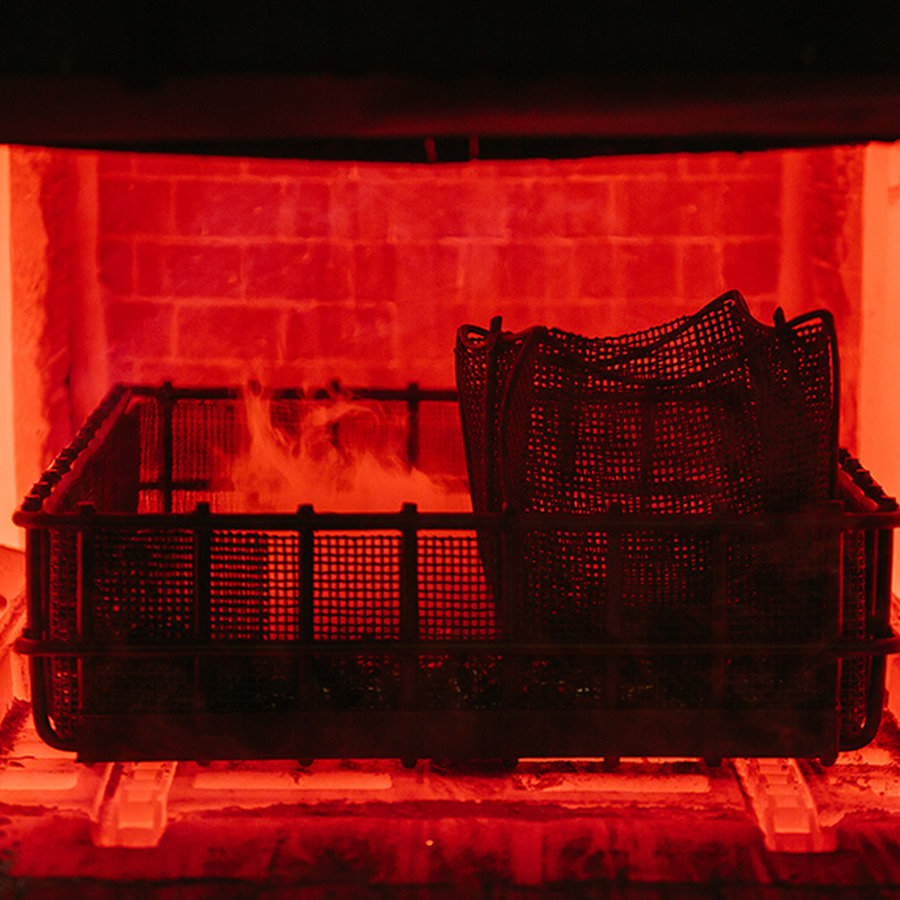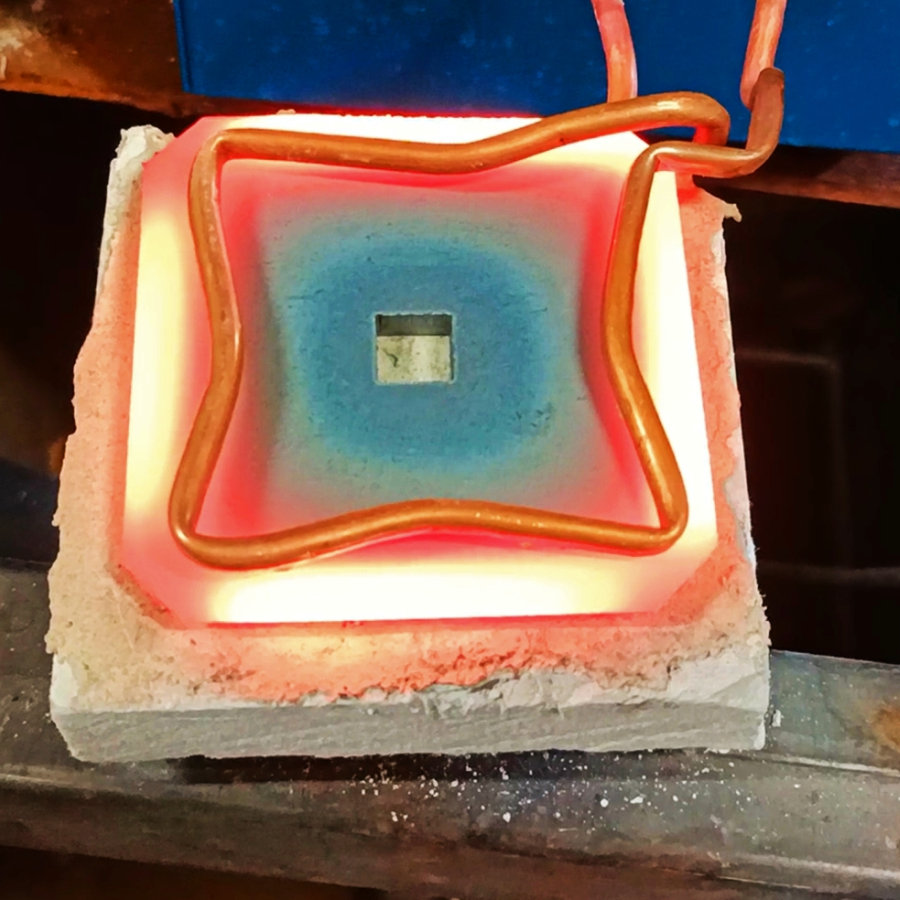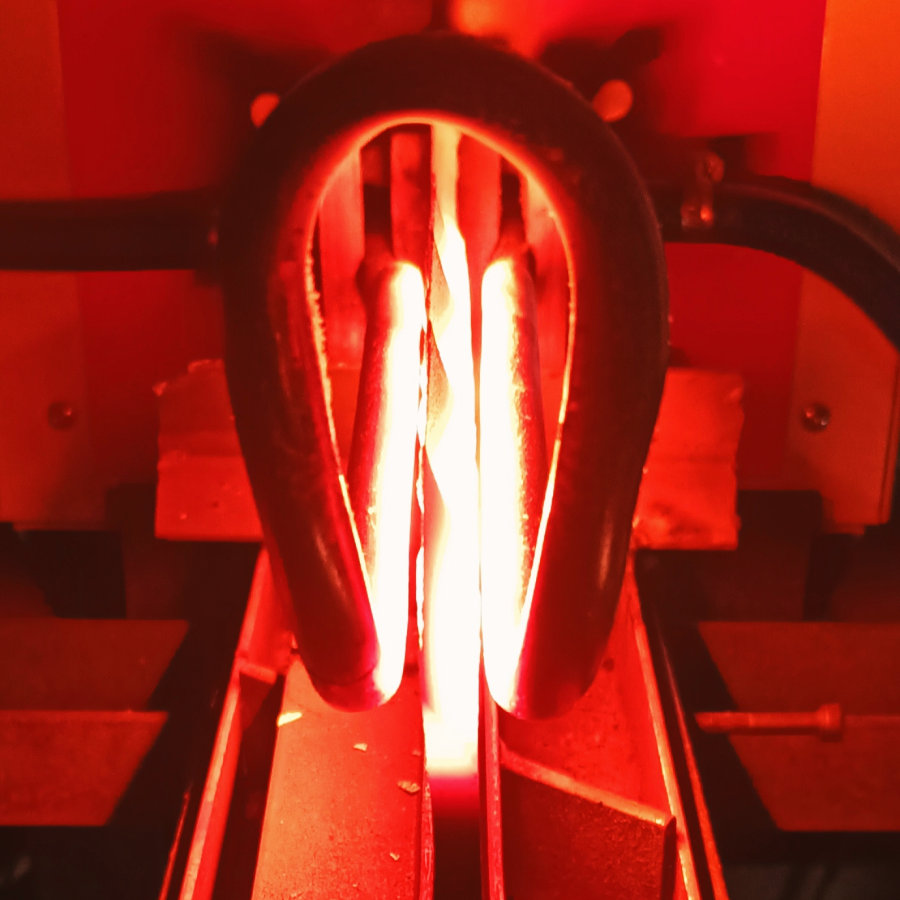The heat / thermal treatment

Normalization
Before hardening, the elements are normalized in a protective atmosphere. We heat them up to the right temperature and then slowly cool them down. Thanks to this method, we obtain a structure with a fine grain, which results in increased strength and uniform properties throughout the cross-section.
– Unification of the structure
– Increased resistance to cracking

Martensitic volumetric quenching
The elements are heated to the required temperature and kept there in order to produce austenite. They are then cooled in polymers or oil. The resulting martensitic structure guarantees us maximum resistance to abrasive wear and high durability. In order to reduce the stresses and obtain the desired properties, each component is tempered at a temperature depending on the expected final hardness.
– High hardness
– The highest resistance to abrasion
– High durability

Induction / Inductive hardening
By means of induction currents, we only heat up the zone-area that requires greater strength. This allows us to obtain a working part with high wear resistance and a flexible core.
– High resistance to abrasion
– High hardness
– Resistance to cracking of elements

Combined hardening
By using double hardening, we can obtain a springy body with a lower hardness (for example, with a bainite or tempered martensite structure) and very hard and abrasion-resistant tooth.
– High durability
– High resilience
– High wear resistance of the cutting part